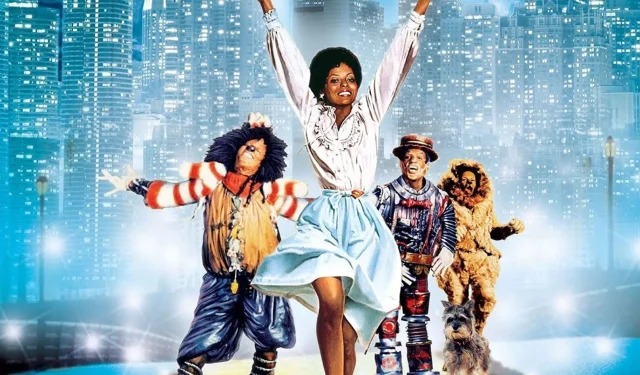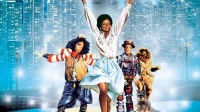Exploring the Cultural Resonance of The Wiz
The Wiz, inspired by the beloved Broadway musical, offers a fresh interpretation of L. Frank Baum’s classic The Wizard of Oz, infusing it with contemporary African-American culture. In this vibrant adaptation, Dorothy Gale transitions from her mundane life in Harlem to a reimagined urban Land of Oz. Although the film faced criticism and struggled at the box office upon its release in 1978, it has since gained appreciation as a cherished cult classic. This unique rendition showcases creativity, though not all elements resonate successfully.
Star-Studded Cast Elevates the Experience
The film features a remarkable ensemble including legends like Diana Ross, who portrays Dorothy with the same charm and warmth that Judy Garland famously embodied. Ross’s radiant performance allows her to captivate audiences, carrying the narrative with grace. Another standout is Mabel King, known for her role as Mama in What’s Happening!!, who delivers a captivating performance as the Wicked Witch of the West, blending theatricality with unexpected warmth, transforming her into a character that’s both fierce and oddly lovable.
Notably, Michael Jackson makes his feature film debut as the Scarecrow, showcasing not only his unparalleled musical talent but also his acting ability. Unlike Ray Bolger’s overly theatrical portrayal, Jackson embodies the Scarecrow’s insecurities and vulnerabilities, creating a deeply sympathetic character that resonates with audiences. His performance adds depth to the depiction of a character often seen as a mere comic figure.
Directorial Choices Under Scrutiny
Sidney Lumet’s Vision: A Mismatched Direction
The decision to appoint Sidney Lumet, renowned for his gritty crime dramas such as Serpico and Dog Day Afternoon, as director of The Wiz was contentious. While Lumet’s background might seem disconnected from the lively world of a musical, his films often explore social issues that parallel the themes present in The Wiz.
Despite Lumet’s ability to grasp the underlying messages associated with the Black experience—ranging from systemic discrimination to the historical injustices of slavery—his directorial style fails to match the film’s inherent vibrancy. The contrast between the film’s glossy aesthetic and the raw energy of its performers often results in a lack of harmony. Lumet’s hesitation to embrace the film’s silliness detracts from the engaging performances of its stars.
The Unforgettable Soundtrack of The Wiz
Rhythms That Resonate
The soundtrack of The Wiz, crafted by Charlie Smalls and produced by the legendary Quincy Jones, is replete with infectious melodies that combine R&B, soul, and disco influences. Every track possesses a catchy hook, akin to the memorable compositions of Lin-Manuel Miranda, and is elevated through outstanding vocal performances accompanied by dazzling choreography.
This film marked a pivotal collaboration between Michael Jackson and Quincy Jones, setting the stage for Jackson’s future successes with albums like Off the Wall and Thriller. However, Lumet’s directorial approach echoes the style of the original West Side Story, favoring static shots that confine the energy of the performances. For instance, although “Ease on Down the Road”is one of the soundtrack’s most exhilarating pieces, Lumet’s choice of a lengthy wide shot restricts the dynamic visual storytelling that such a lively number deserves.
Visually, The Wiz dazzles with stunning costumes—ranging from Nipsey Russell’s steampunk interpretation of the Tinman to the glittering emerald attire of dancers in Emerald City. The film successfully reimagines Oz as a contemporary urban landscape, creating a compelling visual experience that enhances the story’s impact.
While the art department excels and the talented cast brings their A-game, the film’s potential is hindered by Lumet’s static visual style. With a director more attuned to the exuberance of musicals, The Wiz could have transcended its current status as a quirky retelling of a classic, emerging as a truly exceptional film experience.


